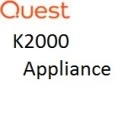Slow image deployment to Surface Book using K2000
It is taking over 3 hours to download and apply Windows 10 images to our Surface Books. It usually takes only 10 - 20 minutes for this step alone on other machines. The rest of the post install tasks occur at a normal rate. I have tried using a Monoprice USB3 Gigabit Ethernet adapter, which works fine for our Dell XPS 13s, and the Microsoft Surface dock. Anyone run into this one?
0 Comments
[ + ] Show comments
Answers (3)
Answer Summary:
Please log in to answer
Posted by:
TheAustinDave
8 years ago
Top Answer
I would recommend using the streaming WIM method (would need to re-capture the image as a WIM unless its already this format).
http://www.itninja.com/blog/view/kace-streaming-wim-toolkit-kswim
Comments:
-
Followed the guide and it did the trick. I would like to note that If you use UEFI images and you need to use the "S" and "C" mid level partition tasks in that order to reapply the UEFI partiton task that comes with the K2000. - lig 8 years ago
Posted by:
chucksteel
8 years ago
Posted by:
SMal.tmcc
8 years ago
I have done a few surface's now, the last 2 were pro4's
I use a usb 3.0 hub with KB, Mouse and StarTech USB2.0 dongle. I sent a wim to the 2 surface pro4's in about 26 minutes each, my image is a 14gig compressed wim that expands to 21 gig on the drive.
Typically I can deliver this image in 20-30 minutes depending on the location and hardware.
I use a usb 3.0 hub with KB, Mouse and StarTech USB2.0 dongle. I sent a wim to the 2 surface pro4's in about 26 minutes each, my image is a 14gig compressed wim that expands to 21 gig on the drive.
Typically I can deliver this image in 20-30 minutes depending on the location and hardware.
Comments:
-
Have you deployed an image to a Surface Book?
Are you using this best practice: https://www.itninja.com/question/slow-image-deployment-to-surface-book-using-k2000
or this one:
https://support.quest.com/kace-systems-deployment-appliance/kb/186950/uefi-image-process-using-usb-key
The first is capturing a scripted install off of a VM with only a single partition with creation of boot partition by KACE scripts
The second is capturing C and S, then pushing both back out.
Which works for Surface devices in your organization? - Eberfinn 4 years ago





